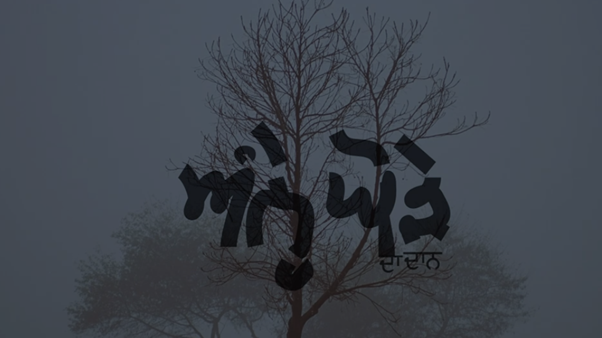At a time when the mainstream cinema, driven by commercial interests, chooses to overlook the multifaceted interpersonal as well as socio-political realities of rural life and the people that inhabit it, it becomes important to explore and acknowledge alternative regional cinemas that subvert and overturn not only the stereotypical or romanticised notions of rural life but also the dominant ideologies of caste, class and modernity. In this regard, Anhey Gorhe Da Daan (Alms for the Blind Horse), a 2011 Punjabi film by Gurvinder Singh, based on the eponymous novel by Gurdial Singh, assumes great significance.

The film masterfully captures the way the lives of the Dalit Sikhs in rural Punjab are shaped and upturned within the shapeshifting matrix of modernity, caste hegemony and power. The events in the film take place on a single day, but the narrative is not linear or overly descriptive in its form, thereby subverting the hegemony of straightforward, simplistic storytelling. The subversion in the film, therefore, operates not only at the level of the honest and sincere portrayal of the everyday existence and the all-pervasive social milieu of rural life but also in the dissonance embodied in its structure, which works as a narrative in itself, is deliberate. It is reflective of the friction created in the lives of people in the village by their fundamental trials for existence in the face of power and dominance.
The film, in line with the novel, presents the everyday lives of the inhabitants of a village who wake up to the news of the forced demolition of the house of a Dalit man named Dharma, after which the land is sold off by the landlord. The villagers come together in solidarity with Dharma, but the landlord, with the backing of the police, arrests Dharma in order to suppress his dissent against the unjust demolition of his house and the eviction of his family. The socio-political nexus of caste-class hegemony and the brute forces of the state (in this case the police and the village sarpanch) is underscored in the film.
One masterfully done scene in the film, in particular, leaves an indelible mark on the audience. The villagers come together in order to advocate Dharma’s case to the sarpanch. The mobilisation of the villagers is powerfully depicted: we get sweeping aerial shots of multiple feet marching forward and a swarm of heads in resistance. One cannot help but feel and be roused by the sense of solidarity and community that the villagers have. And yet, Dharma’s case remains unresolved throughout the film, as does the mystery of the gunshots that the village woke up to.
The inconclusive nature of the film and its events is suggestive of the lack of closure in the lives of the people whose existence is dictated by the arbitrariness of the power of the dominant castes. One of the villager’s wives questions this arbitrariness of power that begets and reinforces inequities of labour. Her tirade is directed against the landlords who exploit labour by denying them timely minimum wages and treat them as less than humans. The precarious nature of their ‘employment’ worsens the misery of the lives they lead.
Parallel to the depiction of everyday rural life, the film also gives insights into the experiences of Melu, Mal Singh’s son, who is a rickshaw-puller in the city. In the backdrop of demonstrations by rickshaw pullers for better work conditions, Melu and his companions face existential questions about the meaning and significance of life and livelihood. Looming large over their city lives is the power plant, a symbol of capitalism, modernity and material progress, which seems to overshadow the lives of people like Melu, who find it difficult to sustain themselves physically and emotionally in a city that not only discards their dreams but also alienates them by subsuming their lives into its grotesque fabric of ‘development’.
It is the sense of alienation caused by the forces of social hierarchy, capitalism and modernity in the village that prompts Mal Singh to go to his son in the city, who, on the other hand, driven by a similar feeling of alienation that characterises his life in the city, returns to the village. This movement between the village and the city is a manifestation of the restlessness of the poor, labouring class of people who cannot find or carve out a place for themselves anywhere. It is this restlessness that makes Mal Singh’s daughter Dayalo venture out into the streets in the pitch dark of the night of the lunar eclipse.
In this regard, the title of the film, and that of the eponymous novel, becomes very important in order to understand the representation of the everyday realities of Dalits in rural Punjab and the restlessness that marks their lives. According to the Hindu myth of Rahu and Ketu, while Lord Vishnu, taking the female form of Mohini, was distributing nectar (amrit), Svarbhanu, a demon disguised as a god, was able to drink it. The sun and the moon gods informed Vishnu of the presence of a demon and he beheaded Svarbhanu for his transgression. But the demon had consumed a drop of amrit and was therefore immortal. His head, separated from the torso, came to be known as Rahu and his torso as Ketu. It is believed that Rahu, riding his blind horses, takes revenge on the sun and the moon gods by devouring them during every solar and lunar eclipse. The exclusivist, oppressive notions and practices of caste in Hinduism impose the ideology of the lower castes being the descendants of these demons. The film wonderfully appropriates this myth to represent the drudgery of the lives of the Dalits who are forced into dependence on the dominant, upper castes for survival. The myth is also deployed in order to present the possibility of liberation through what the society deems to be ‘transgression’. The venturing out of Dayalo on the night of the lunar eclipse, therefore, is suggestive of the possibility of resistance through transgression.
In conclusion, the film embodies a critique of oppression imposed by forces of caste and capitalism. Set in an agrarian Punjab undergoing the Green Revolution, the film captures the rapid changes that took place at the time as well as a sense of stagnancy that colored the lives of the labouring poor who continued to live a life of drudgery, exploitation and toil, having absolutely no semblance of control over the fruits of their labour and their livelihood. It leaves us with memorable visuals that are anything but ordinary in their depiction of the quotidian rural life and the trials and tribulations that are embedded in its nature. This is formally and politically radical and subversive filmmaking that has stood the test of time and is perhaps even more relevant in the world and the times we live in, when the project of capitalism and urbanisation is at its peak and continues to reinforce caste and class hierarchies, making the lives of the marginalised all the more precarious and alienated.
Hunardeep Kaur is a third year student of English Literature at Lady Shri Ram College for Women, University of Delhi. She is interested in looking at the world through the lens of art, literature and culture. She finds solace in poetry and sunsets.


